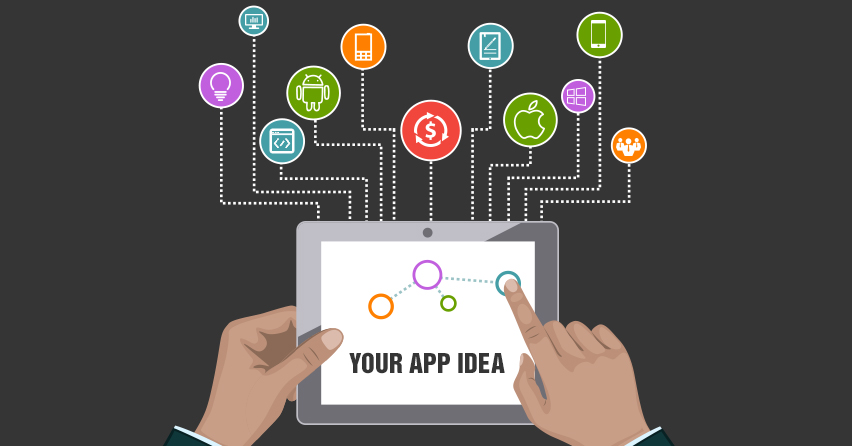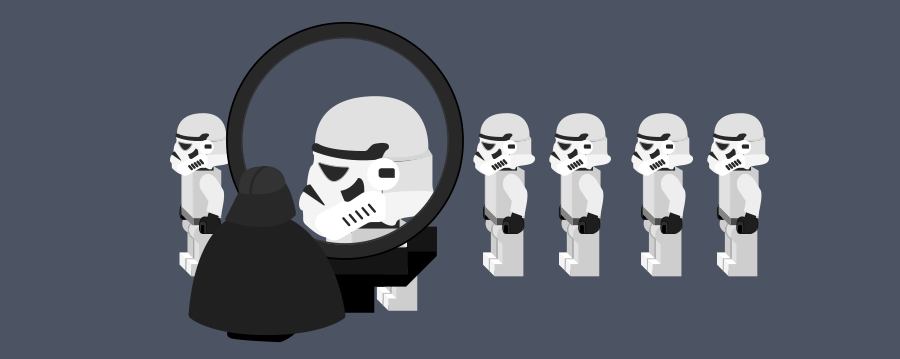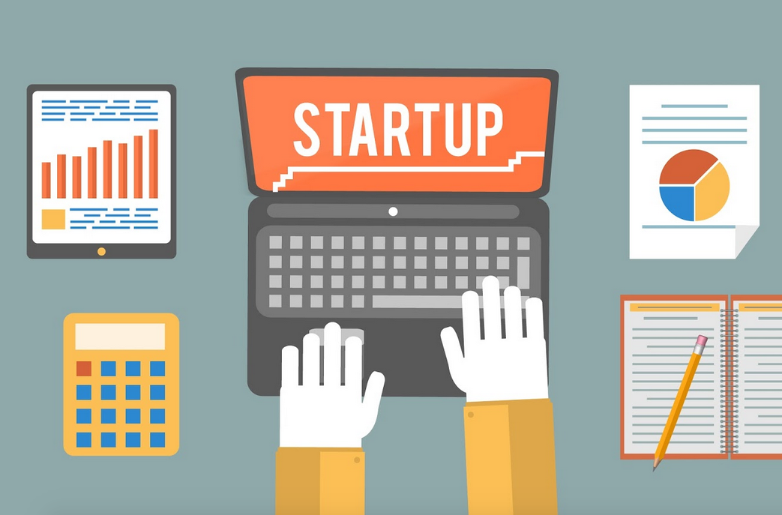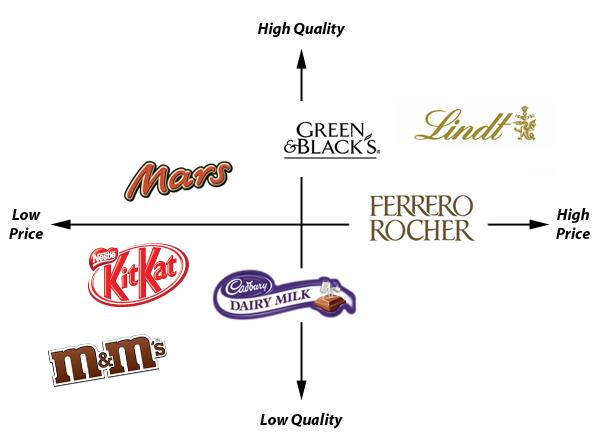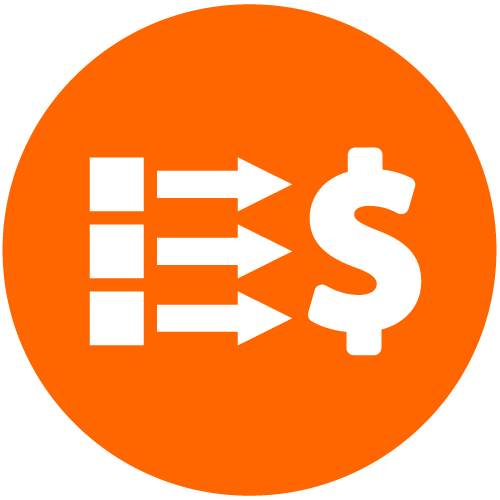The Complete Startup Marketing Plan Template For Never Ending Revenue
This epic 4,000 word post has been written by the marketing team at Buzinga, designed to guide startups through the exploration of their marketing plans. So grab out your notepad, put on your creative thinking cap and leave us your feedback in the comments section!
Congratulations!
You’re obviously building an app, anticipating a launch where you’re drowning in dollar bills, your app is trending worldwide, and Time Magazine is calling you the next Zuckerberg.
Or you’ve already launched, no one is downloading your app, you’re crouched in the fetal position looking at your Google Analytics account and your empty bank account, holding yourself rocking back and forth.
It’s time go back to the drawing board and design a startup marketing plan that will have investors drooling and downloads soaring.
In this startup marketing plan template, I’m going to walk you through an exploratory process involving 13 steps to flesh out your marketing plan.
The end result will be a short marketing document to include with your information memorandum to hand to investors.
Even if you aren’t seeking external funding from investors, a marketing plan is still an essential for you and your team to refer to!
Before you begin
This template isn’t about the tactics, like building a Facebook ad or a high-converting landing page.
This is focusing on a high-level marketing strategy that potential investors can look at and say:
“Yes, this startup understands their target market and knows exactly how they are going to onboard high quality new users to deliver a positive return on investment and grow the brand. I want in.”
Let’s go.
-
The Problem
I love hearing people’s “Aha” moments when they came up with their app idea.
It usually goes like this, “So I was having a drink with my friends last Friday night, when we realised XYZ problem existed…”
These ideas are inspired and only full of optimism for what the idea could be and how it will revolutionise the market.
Mark Zuckerberg still stands by his first “Aha” moment when it came to Facebook.
Like I mentioned above, it was to simply connect people.
Albeit its first ‘connectivity mission’ was to let guys know what hot chicks were single at Harvard. (Revolutionary… rolls feminist eyes.)
But this idea of connecting people drives every aspect of Facebook’s marketing, from its products like Internet.org to its rules on advertising and marketing on Facebook.
Zuckerberg wasn’t a marketer, he was just a passionate tech nerd.
But he knew his vision, his market, and was able to build a team of experts around him that made his dream true.
Know your problem better than ANYONE.
Let’s continue using Zuckerberg as an example. Zuckerberg’s problem was “Men want to know the relationship status of women on campus to know who is available and therefore avoid rejection.”
Over to you:
What problem are you solving?
Tip: A problem isn’t a problem unless people are experiencing pain because of it.
Try and nail your problem down to one or two sentences.
-
The Market
Technology is inherently revolutionary, so when introducing a new app to market you may not have any direct competitors, or there may not even appear to be an existing market for your app.
Often the most successful apps have created the market as we know it.
Uber and Airbnb are all examples of totally first-of-their-kind ideas (that actually worked) which would not have gone ahead had they focused too heavily on current market size in their validation process.
Instead, they focused on potential market size.
When building a marketing plan you need to know what the actual market opportunity is.
Head over to How To Estimate Market Size For An App Idea to put a number to your market opportunity.
Once you know your market, you’ll be able to understand your target audience. With this plan, you must include an analysis of not only the current market situation, but also the potential market that your app could reach in the future.
This is tricky to explain, so let’s quickly take a look at how Uber did this:
First, they understood that there was a market opportunity for premium Uber drivers – hence the idea for Uber Black.
However, their market size and opportunity at this point was absolutely minimal. It was only people who could afford an ‘everyday’ driver using this mobile app.
But Uber knew once they’d built this technology, that their market opportunity was to revolutionise the entire taxi industry, which took their market size to new levels.
People who never even caught taxis were now using Uber!
Investors want to know: How big is your target market?
One of the best ways to gather this information is by jumping online and visiting your local government site, and collating data that can be useful to you.
Building an app for sports clubs?
Simply Google how many sports clubs there are in Australia.
100,000.
At a 1% market share and projected revenue of just $10 per client per month, that’s $120,000 a year you’re already making.
Designing an app for mums with young children?
Simply Google how many mums are there in Australia with children under the age of 18.
You’ll be able to find most of this information on the Australian Bureau of Statistics.
Investors simply want to know how many people can you possibly make money from, and what is a reasonable market to penetrate.
Again, Check out this detailed blog for more free ways you can estimate your market size.
3. The customer
Once you have figured out your market, you need to segment that market into your potential customers or ‘target market’.
The easiest and most thorough method of segmentation uses demographics and psychographics.
- Demographics – Statistical, population-based characteristics, including (but not limited to):
- age
- gender
- occupation
- marital status
- Geographic location
- Household income
For example: Fathers aged 30-55 who live in outer-city suburbs and earn $70K-$100K a year.
Now that you’ve identified your market on a superficial level, look at their psychographics.
Your customer is more than a bunch of numbers. Not every father aged 30-55 who is experiencing the problem your app attempts to solve will be engaged by your product.
Why? Because consumer behaviour is driven by inner desires and attitudes, and these are unique to all of us!
- Psychographics – Characteristics of a customer based on interests, activities and opinions, usually stemming from your demographics.
Setting out psychographics basically sets a profile of your customer’s lifestyles.
Some examples of psychographics:
- Concerned with health and appearance
- Wants a healthy lifestyle, but doesn’t have much time
- Enjoys going online in the evenings to relax
- Tends to favor premium, higher quality goods over budget items
- Spends most time with family, but sees friends at least once a week
Wherever you can, dig deeper into your customer’s profile.
For example, if you’ve identified your customer is a runner as one of their psychographics, what kind of runner are they?
Do they compulsively run every day, or just once or twice a week?
What’s their motivation for running? Is it to lose weight or just to keep up a basic level of fitness?
This will help you hone in on your target market and use it to inform marketing strategy.
4. Competitors
Even if your app idea is original, you will always have competitors.
Anyone who is stealing attention away from your app is an indirect competitor. Don’t stress – Having competitors is a good thing, it’s proof that you have a market!
Your goal is to figure out a way to penetrate that market and dominate a share of it. The best way to approach this is to identify the three strongest competitors.
This may be based on downloads, social media followings, online presence, or any other variable you’ve identified as significant.
Under each competitor, identify the following:
- What are their strengths?
- What are their weaknesses?
- Why is your solution better than what they offer?
That last point is the most important.
The most common ways 1 solution is better than another are:
- Superior functionality
- Cheaper
- Better value for money (note – this is not the same as being cheaper!)
- The experience is more enjoyable or useful
- You have some other special sauce…whatever this may be!
See also: The Ultimate Guide To Performing Competitive Analysis On Apps
5. Unique Selling Proposition (USP)
Your USP is what defines you in relation to your competitors.
You need to come up with a one sentence ‘elevator pitch’ of what why your app is better than anyone else’s.
Think about your USP as how your customers would describe you to their friends who have never heard about you.
“Oh, you haven’t heard of Uber? It’s like an app for on-demand drivers that is significantly cheaper and more convenient than catching taxis.”
Very few businesses are ‘one-of-a-kind’, so why should I choose your app over others?
What are you going to provide me with that’s going to make my life easier?
One acronym that I like to remind myself of is KISS.
KISS = Keep It Short and Simple.
What is the problem? How are you going to solve it better than anyone else?
I came across a company called Nerd Fitness whilst looking for some great examples of tech companies that position themselves uniquely in their market.
Check out their USP:
Nerd Fitness: Helping desk jockeys, nerds, and average Joes level up their lives.
There are so many fitness apps, blogs, courses and products in the ‘health and wellness’ market at the moment, it’s starting to become a bit of a blur.
Every fitness brand positioning screams: Eat/drink/use this to either look like a Victoria Secret model or Channing Tatum.
So how does Nerd Fitness differentiate themselves? They go straight for the ‘niche market’ of people with low to average fitness who just want to get a bit fitter in a comfortable, safe environment of people they can actually relate to.
The SWOT Analysis
One of the most useful tools to start honing in on your USP is a SWOT analysis to identify your company’s current situation.
Broken down, it provides a simple visual of a company’s internal strengths and weaknesses, as well as external opportunities and potential threats.
Strengths
- What advantages does you company have?
- What do you do better than anyone else?
- What internal resources do you have?
- Positive attributes of people
- Tangible assets of the company
Weaknesses
- What factors could cause you to not onboard new users, or to lose users once they have used your app once?
- What areas should you avoid?
- What areas need improvement to gain a competitive edge?
Opportunities
- What potential avenues can take your product down in the future?
- What possible changes in government, technology or the market could be utilized by your company?
- What other businesses could your product collaborate with in the future to increase reach?
Threats
- What are competitors doing that could undermine your success?
- Can you foresee any changes in government, technology or the market that could hinder your success?
- Has there, or will there be, a significant change in supplier prices or the availability of raw material?
6. Vision and Mission
These are often overlooked but are important in helping you establish goals and direction.
Keep it short, inspiring and straight to the point.
Vision:
This is a ‘for-life’ statement of your product’s existence.
A company’s vision statement has been referred to as a ‘north-star’ of a company, in which all employee’s should be working towards.
At Buzinga, our vision is to be Australia’s best workplace. We can’t achieve that title if we aren’t hiring the best people, building the best apps and growing to be able to afford fun stuff.
You don’t have to have a vision that isn’t relevant to your business. Your vision may simply be to revolutionise your market.
If you could take a photo now of what your business would look like in 10, 20 or even 50 years time, what would that photo look like?
What is the reason for your app’s existence?
This is important to convey to investors and your team, as it can effectively communicate the core of your business’s purpose.
An good example of a clear and effective vision statement is Google’s:
“Organize all of the data in the world, and make it accessible for everyone in a useful way.”
They sure hit the nail on the head with that one.
Mission:
The mission is more specifically, the WHAT, WHO, and HOW of your vision.
Written in no more than two sentences, your mission is an adjustable statement that can be revised every few years to adapt to the changing dynamics of your company and market.
Adeo Ressi of Founder Institute devised this simple sentence that you can substitute your information with.
“my company, _(insert name of company)_, is developing _(a defined offering)_ to help _(a defined audience)_ _(solve a problem)_ with _(secret sauce)_”.
If we were to plug in Buzinga App Development:
Buzinga App Development builds world-class, creative technology solutions to help startups and enterprises solve real world problems, with robust internal processes and an unrivalled passion for helping our clients change the world using technology.
Although your vision and mission may seem miniscule in comparison to the other information you will be presenting to investors, it will act as a projection of the direction and values that you want your company to take.
7. Market Positioning
Where do you desire to be?
Where are you now?
One simply way to demonstrate this effectively is to create a graph.
A market positioning matrix, sometimes called a ‘perceptual map’, will allow you to visually represent where your business fits in the market relative to your competitors.
This will help you define where your niche exists.
Have a look at this one for the chocolate industry (one very close to my heart) for some context.
What type of product do you have?
Is your app high end, or value for money?
Is it a specialized product, or do you offer a broad variety?
Your ‘Y’ axis will be your perceived quality, and your ‘X’ axis will be your cost.
Price and quality are the 2 most commonly used axes for a perceptual map, but you can substitute any 2 dimensions that are important to consumer decision making in your industry.
8. Business Objectives
This is where you dive in on your previously outlined Vision and Mission Statements, and state actual goals for the launch of your app.
“Having a comprehensive list of business objectives creates the guidelines that become the foundation for your business planning.” – George Root of Demand Media
Topics that should be considered when outlining your objectives include:
- Profitability
- Customer Service
- Growth
- Financial Maintenance
- Competitive Analysis
A neat little acronym to keep in mind when setting your business objectives and goals, is SMART.
SMART Goals
Specific
Is you goal specific?
Measurable
Is your goal measurable?
Attainable
Is your goal achievable?
Relevant
Is this a goal that will be beneficial to your company?
Timely
A goal must have a deadline. When can this goal be achieved by?
Tip: Design goals based on business outcomes. For example, increasing app downloads may be a goal because it relates directly to revenue.
9. Branding
When is comes to your brand’s image, consistency is key.
Branding is essentially the practice of taking your brand values, corporate identity and mission, and translating it into a unique positioning in consumer’s minds.
Some ways you convey your branding:
- Colour schemes
- Logos
- Slogans
- Tone of voice (are your serious, funny, quirky, empowering…what do you want to be known for?)
- Other images
Ensuring all of these are consistent is crucial to building brand awareness and recognition.
I highly recommend engaging in professional branding to design your corporate identity, if you’re willing to invest money into the product, then you should willingly invest money into branding.
99Designs is a great option for you to outsource a logo but sometimes having the opportunity to meet with a company who understands your values and vision creates a logo with a deeper emotional meaning, which is important.
Not every app can be a household name, but you want to be able to build your branding up enough that your name can be recognized when your sponsored Facebook Ad pops up on their newsfeed.
See also: 10 Steps To Designing A Memorable App Brand
10. Strategy
You strategy is the big picture of your marketing umbrella.
Here is where you outline all the channels that you will utilize to drive your marketing campaigns.
Based on the research you did earlier about your target audience, you will then focus your attention to the platforms that will generate the most leads.
The most important thing when speaking to your audience is to give them a good experience.
You don’t want to annoy them by filling up their inbox or spam them via Facebook.
You want them to feel like they are part of a community.
Make sure you download The Beginner’s Guide To App Marketing for a crash course in marketing strategy.
Traditionally there were four ‘P’s’ of Marketing, but as the field has developed and being more of an integral part of a company’s success, a few more focus points have been added.
The 7 P’s of marketing
- Product
Your app should solve a problem consumers have, it should work, and it should be at least what they are expecting, if not exceed their expectations.
2. Price
A product is only worth what customers are willing to pay for it.
It doesn’t necessarily mean being the cheapest, but it means being competitive, and the customer should always have a perceived value for money.
Do you have a monetisation strategy?
See also: 5 App Monetisation Strategies That Will Get You Filthy Rich
3. Place
Where will your app initially be launched?
Eventually, the aim of every app should be to go global, but to begin with it should be released to a concentrated market.
This allows for evaluation of what is what is working, and what isn’t.
4. Promotion
How are you going to communicate with your audience? Advertising, PR, Sales Promotion and Social Media are all examples of platforms for promotion.
A common mistake companies make is talking at their audience. A key part of promotion in the Marketing Mix is making sure two-way communication is established.
This paves the way for dialogue with customers and opportunities for feedback.
5. People
People associated with your app can have a profound effect on anyone who comes into contact with it – positive or negative.
Consumers cannot differentiate between the service you provide and the staff working for you.
This is why it is very important to have anyone representing you not only well trained for the role, but also be a good fit for the position.
See also: How To Hire Rockstar Talent For Your Startup
6. Process
This is the delivery of your product, and can also refer to the channels within your business that allow for queries or information handling.
A huge factor of process has to do with customer satisfaction.
The process in which information is provided to customers, and the helpfulness of staff if issues arise, is key to customer satisfaction.
This aspect covers everything from design features, IT support and quality guarantee.
7. Physical Evidence
Because apps are intangible products, it sometimes can be hard to promote something that cannot be experienced before purchased.
This is where validation from outside sources will become crucial.
Testimonials and promotion of positive user experience feedback can be an extremely useful tool.
Basically, how can you reassure your customers you have a great product?
See also: How To Get Key Influencers To Rave About Your App
11. Tactics
These are the channels that fall under the umbrella in the strategies just listed in section 10.
Now that you know what strategies you want to use and the budget you are working with, it’s time to implement them into functioning tactics that can be executed precisely.
Based on your target market, which channel would be best to reach them?
This will require returning to your research earlier about your target market, and pin pointing what would be the best avenue to reach these consumers.
For example, is your target audience female between 18-29 years old? Then Instagram should be your priority channel of choice.
Some examples of ‘low hanging fruit’ marketing channels:
- Social media
- Paid online advertising
- Publicity/PR
It’s all about identifying where your target market hangs out online (what they’re reading, watching, etc), and then engaging them with attractive and quality campaigns.
We put together this guide a few months back on marketing tactics, it comes with tools for automating marketing processes, platforms to consider and highly detailed how-tos for nearly every social media platform that exists including what times to post! Worth a download.
See also: 5 Customer Acquisition Strategies To Reel In Your First 5,000 App Users
12. Financials
What is the budget?
It’s important to be able to confidently say that when you spend $20 here, you will get at least a $40 return on investment here.
Use this to justify where you are spending money, and what results you want to see from your activities.
Don’t try and inflate your numbers (investors can quickly tell when you’re ‘number bludging’), and be sure to explicitly state any assumptions you have made in your budget.
Head over to The Essential Financial Planning Template For App Startups to download a customisable profit and loss spreadsheet to get started.
13. Measurement
Everything that you do must be measurable, right down to the very cent.
Investors want to see how you can track your success, and in turn, theirs.
This goes back to our 8th point of setting business objectives that can be analysed to provide qualitative and quantitative feedback.
Every app is different and has different goals, so therefore the metrics that are used to measure your app’s success will be uniquely tailored to your app.
Open up these blogs below for instruction on how to define, measure and analyse the impact of your marketing campaigns:
- How To Measure Your App’s Success
- 4 Steps To Analysing App Data “The Uber Way”
- How To Gain Actionable Insights From The Top 5 App Metrics
Phew, you finally made it to the end of your first marketing plan template!
Follow this structure and you’ll end up with a professional marketing plan for you startup, one that ensures your marketing activities generate maximum revenue for the crucial years to come!
Hope we could help!
Leave us your feedback below and don’t forget to share with the rest of your team or anyone who may be interested!



